President Joe Biden goes into next year’s election with a vexing challenge: Just as the U.S. economy is getting stronger, people are still feeling horrible about it. Pollsters and economists say there has never been as wide a gap between the underlying health of the economy and public perception. The divergence could be a decisive factor in whether the Democrat secures a second term next year. Republicans are seizing on the dissatisfaction to skewer Biden, while the White House is finding less success as it tries to highlight economic progress.
Quick Read
- Biden’s Economic Challenge: Despite a strengthening U.S. economy, public sentiment remains negative, posing a challenge for President Joe Biden’s reelection bid.
- Perception vs. Reality Gap: There is a significant divergence between the economy’s health and public perception, which could impact Biden’s political future.
- Democratic Pollster’s Insight: Celinda Lake notes voters want not just lower inflation rates but actual price declines, a rare occurrence since the Great Depression.
- Economic Indicators: Job additions and a drop in unemployment rate indicate a strong economy, while inflation has decreased significantly.
- Consumer Sentiment Index: University of Michigan’s Index shows improved sentiment but remains low, with political affiliations influencing perceptions.
- White House’s Economic Strategy: Jared Bernstein emphasizes the need for time to pass economic gains to Americans.
- Shift in White House Messaging: Biden has adopted terms like “Bidenomics,” highlighted specific price decreases, and accused corporations of opportunistic price hikes.
- Blame on Corporations and Trump: Biden blames inflation on corporate price gouging and contrasts his record with Trump’s.
- Republican Counter-Arguments: GOP focuses on consumer feelings and multi-year price increases, urging trust in personal experiences over statistics.
- Public Response to Economic Data: Despite improving economic indicators, public negativity persists.
- Impact of Pandemic and Government Aid: The pandemic shock and the end of government aid have left people feeling economically unsettled.
- Theories Behind Public Sentiment: Factors include the pandemic’s impact, social media influence, political beliefs, and the lag in inflation perception.
- Loss of Government Aid: Average incomes for lower earners dropped post-pandemic aid, affecting perceptions.
- Corporate Pricing Strategies: Companies like Pepsi and Kraft-Heinz raised prices significantly during the pandemic and Ukraine war, contributing to inflation perceptions.
- Biden’s Late Response to Price Gouging: Critics argue Biden’s focus on corporate price gouging is outdated, addressing past rather than current business practices.
The Associated Press has the story:
Biden goes into 2024 with economy getting stronger, but voters ‘feel horrible’ about it
Newslooks- WASHINGTON (AP)
President Joe Biden goes into next year’s election with a vexing challenge: Just as the U.S. economy is getting stronger, people are still feeling horrible about it.
Pollsters and economists say there has never been as wide a gap between the underlying health of the economy and public perception. The divergence could be a decisive factor in whether the Democrat secures a second term next year. Republicans are seizing on the dissatisfaction to skewer Biden, while the White House is finding less success as it tries to highlight economic progress.
“Things are getting better and people think things are going to get worse — and that’s the most dangerous piece of this,” said Democratic pollster Celinda Lake, who has worked with Biden. Lake said voters no longer want to just see inflation rates fall — rather, they want an outright decline in prices, something that last happened on a large scale during the Great Depression.
“Honestly, I’m kind of mystified by it,” she said.
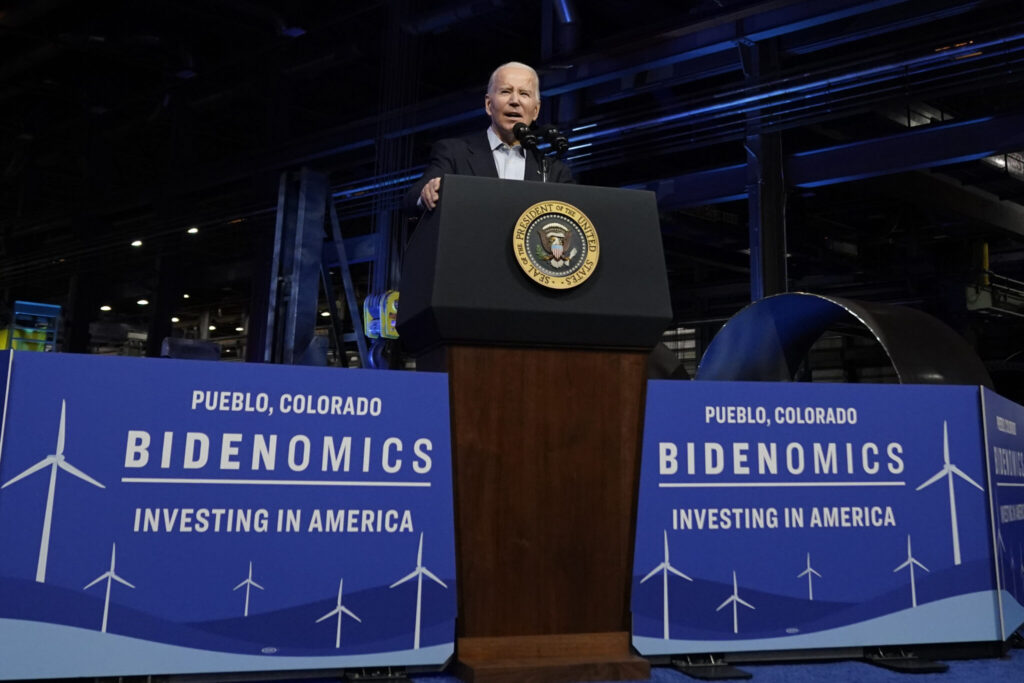
By many measures, the U.S. economy is rock solid. Friday’s employment report showed that employers added 199,000 jobs in November and the unemployment rate dropped to 3.7%. Inflation has plummeted in little over a year from a troubling 9.1% to 3.2% without causing a recession — a phenomenon that some once skeptical economists have dubbed “immaculate.”
Yet people remain dejected about the economy, according to the University of Michigan’s Index of Consumer Sentiment. The preliminary December figures issued Friday showed a jump in sentiment as people seem to recognize that inflation is cooling. But the index is still slightly below its July level.
In a possible warning sign for Biden, people surveyed for the index brought up the 2024 election. Sentiment rose dramatically more among Republicans than Democrats, potentially suggesting that GOP voters became more optimistic about winning back the White House.
“Consumers have been feeling broadly uneasy about the economy since the pandemic, and they are still coming to grips with the notion that we are not returning to the pre-pandemic ‘normal,’” Joanne Hsu, director and chief economist of the survey, said of the overall trend in recent months.
Jared Bernstein, chair of the White House Council of Economic Advisers, stressed that a strong underlying economy is “absolutely necessary” to eventually lifting consumer sentiment. His argument is that as the economy continues to improve, more people will recognize the benefits and sentiment will improve.
“We’ve got to keep fighting to lower costs and build on the progress that we’ve made,” Bernstein said. “We just need more time to get these gains to working Americans — that’s our plan.”
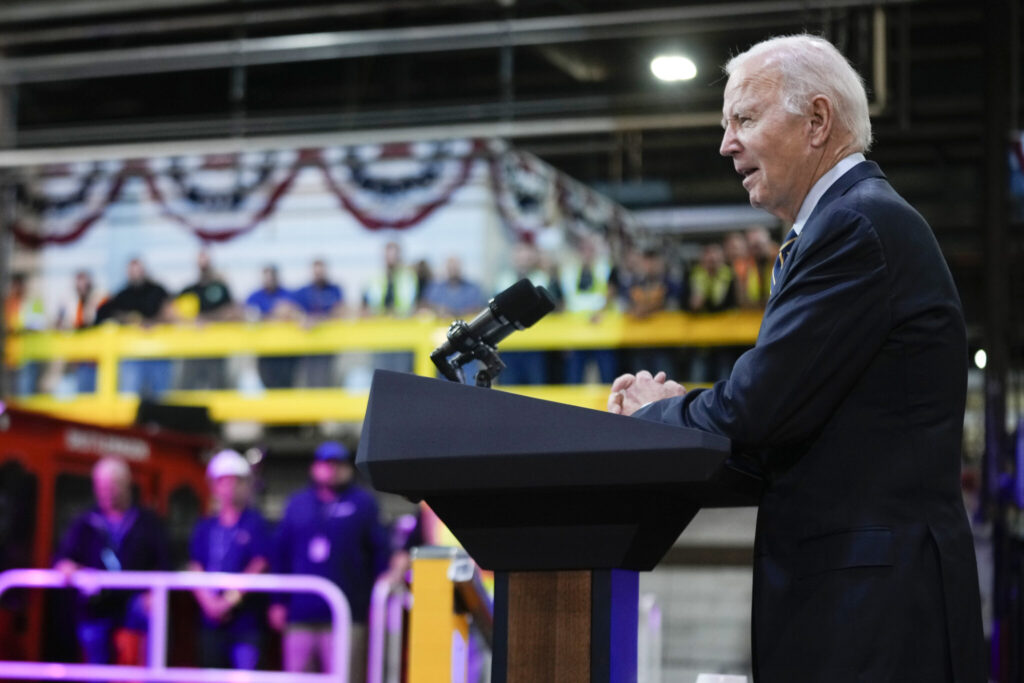
The White House has made three major shifts in its messaging in hopes of building up confidence in Biden’s economic leadership. The president this summer began to pepper his speeches with the term “Bidenomics” to describe his policies, only to have Republicans latch onto the word as a point of attack.
White House officials have pointed out specific items for which prices have fallen outright. They noted lower prices for turkeys during Thanksgiving as well as for eggs. Biden repeatedly emphasizes that he lowered insulin costs for Medicare participants, while other officials discuss how gasoline prices have dropped from their peak.
Second, Biden recently started to blame inflation on corporations that hiked prices when they saw an opportunity to improve their profits, bringing more prominence to an argument first used when gasoline prices spiked. The president’s argument is suspicious to many economists, yet the intended message to voters is that Biden is fighting for them against those he blames for fueling inflation.
“Let me be clear: Any corporation that is not passing these savings on to the consumers needs to stop their price gouging,” Biden said recently in Pueblo, Colorado. “The American people are tired of being played for suckers.”
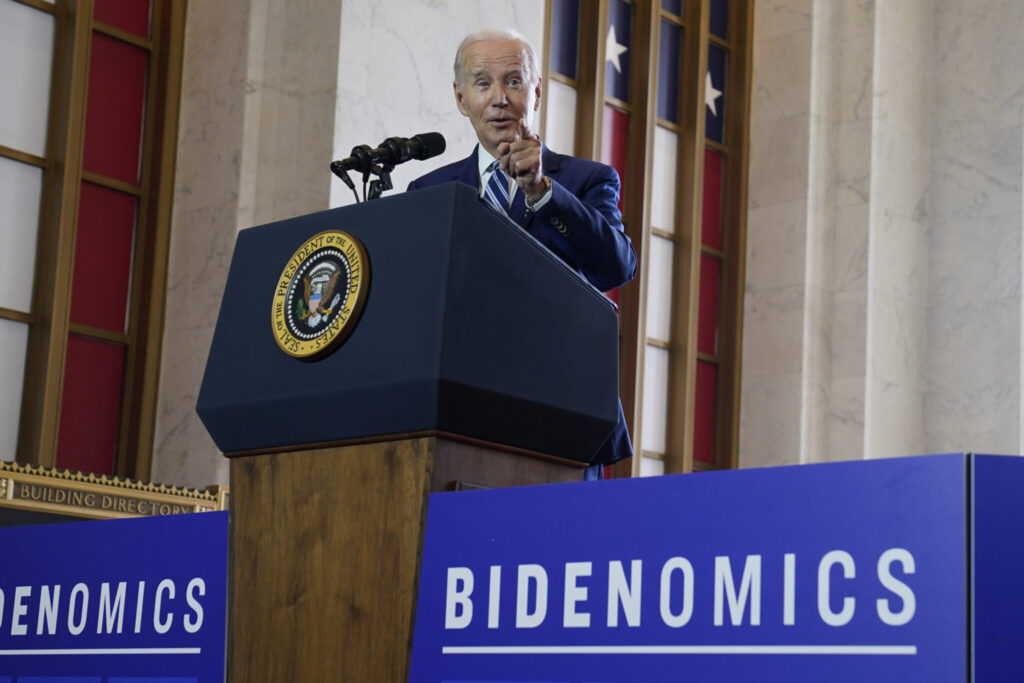
And Biden is now going after the track record of former President Donald Trump, the current GOP front-runner. Biden’s campaign sent out a statement after Friday’s employment report that said, “ Despite his claims of being a jobs president, Donald Trump had the worst jobs record since the Great Depression, losing nearly three million jobs.”
The Republican counter to Biden has been to dismiss the positive economic data and focus on how voters are feeling. As the annual inflation rate has fallen, GOP messaging has focused instead on multi-year increases in consumer prices without necessarily factoring in wage gains. And Republican lawmakers have argued that people should trust their gut on the economy instead of the statistics cited by Biden.
“Joe Biden’s message to them is just this: He says don’t believe your lying eyes,” Sen. John Barrasso, R-Wyoming, said in a recent floor speech.
Biden’s speeches over the past two years has done little to improve his anemic polling on the economy. Administration officials had once assumed that better economic numbers would overcome any doubts among voters, only to find that the negativity stayed even as the U.S. economy became likely to avoid a recession once forecasted by economists.
Claudia Sahm, a former Federal Reserve economist, has been surprised by the anger generated online when she has noted the signs of a strong economy.
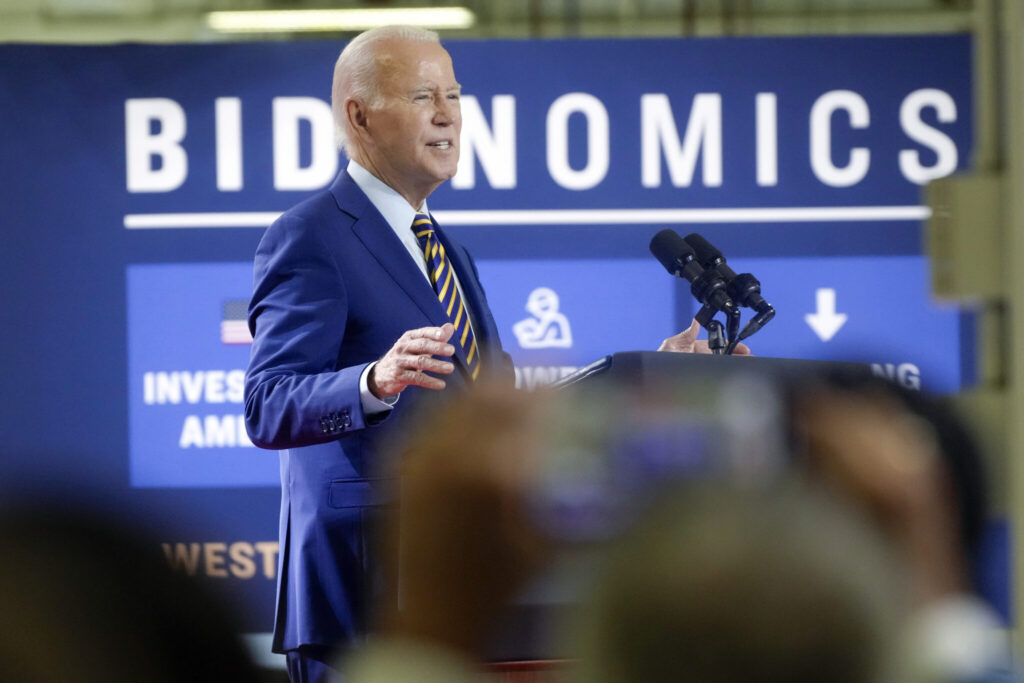
A typical U.S. household is better off than it was in 2020. Inequality has lessened somewhat in recent years as wage growth has favored poorer workers. Yet people still seem rattled and disconnected by the shock of the pandemic, the arrival of government aid and the inflation that followed as hiring improved.
“People have really been jerked around,” Sahm said. “Things have been turned on and off. Everything has moved fast. It’s been disruptive and confusing. We’re just tired.”
There is no solitary cause for this gap between the major data and public feeling. But the experts trying to make sense of things have multiple theories about what’s going on. Besides the pandemic’s impact, it’s possible that social media has distorted how people feel about the economy as they watch the posh lifestyles of influencers. Many people also judge the economy based on their own political beliefs, rather than the underlying numbers.
It could simply be that people need time to adjust after a period of rising inflation. As a result, there’s a lag before a slowing rate of inflation boosts how consumers feel, according to a recent analysis by the economists Ryan Cummings and Neale Mahoney.
“Sentiment is still being weighed down by the high inflation we had last year,” Cummings said. “As that recedes further into the rearview mirror, its effects are likely to diminish.”
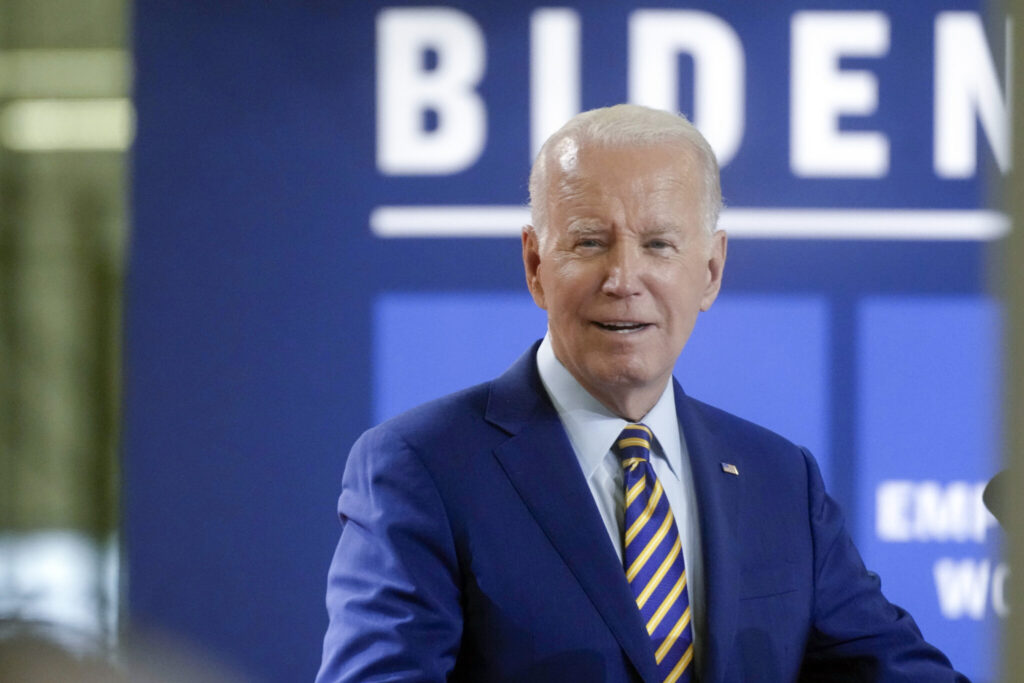
Another possibility is that the loss of pandemic aid from the government left people materially poorer. Millions of households got checks from the government and an expanded child tax credit deposited directly into their accounts. Republicans blamed this funding for feeding inflation, but the money also initially helped to shelter people from the pain of rising prices.
Adjusting for government transfers and taxes, the average annual income for someone in the lower half of earners was $34,800 when Biden took office, according to an analysis provided by Gabriel Zucman, an economist at the University of California, Berkeley.
That average fell to $26,100 by March 2023 in a sign that wage growth could not make up for the loss of government aid.
Samuel Rines, an investment strategist at Corbu, found that companies including Pepsi, Kraft-Heinz, Procter & Gamble and Kimberly-Clark latched onto the higher food and energy prices after Russia’s 2022 invasion of Ukraine to boost their own products’ prices and increase profits.
Earnings reports suggest that consumers started to tire of some companies’ double-digit price increases this summer, prompting those companies to indicate that future prices increases will be closer to the historic average of 2%.
Biden can reasonably argue that companies took advantage of the war in Ukraine and the pandemic to raise their prices, Rines said. But the increases happened 12 to 18 months ago and Biden’s current argument doesn’t apply to what businesses are doing now.
Rines said of the president’s message on price gouging: “It’s pretty much 18 months too late.”






